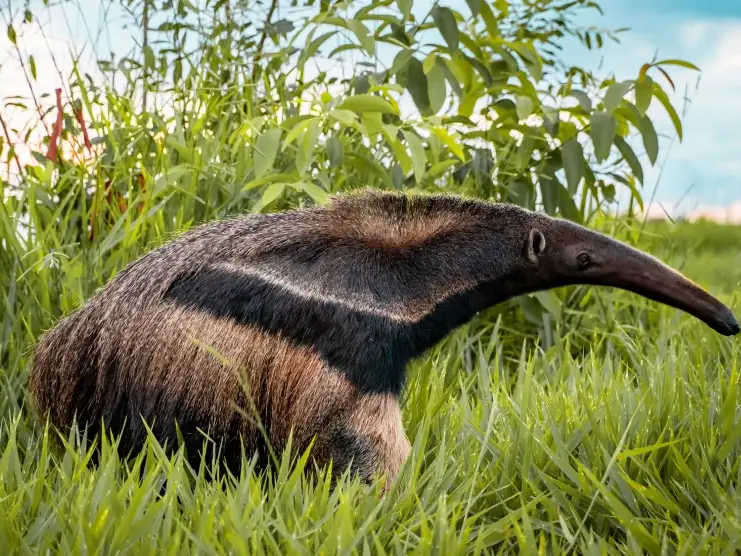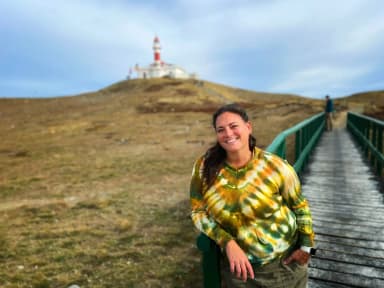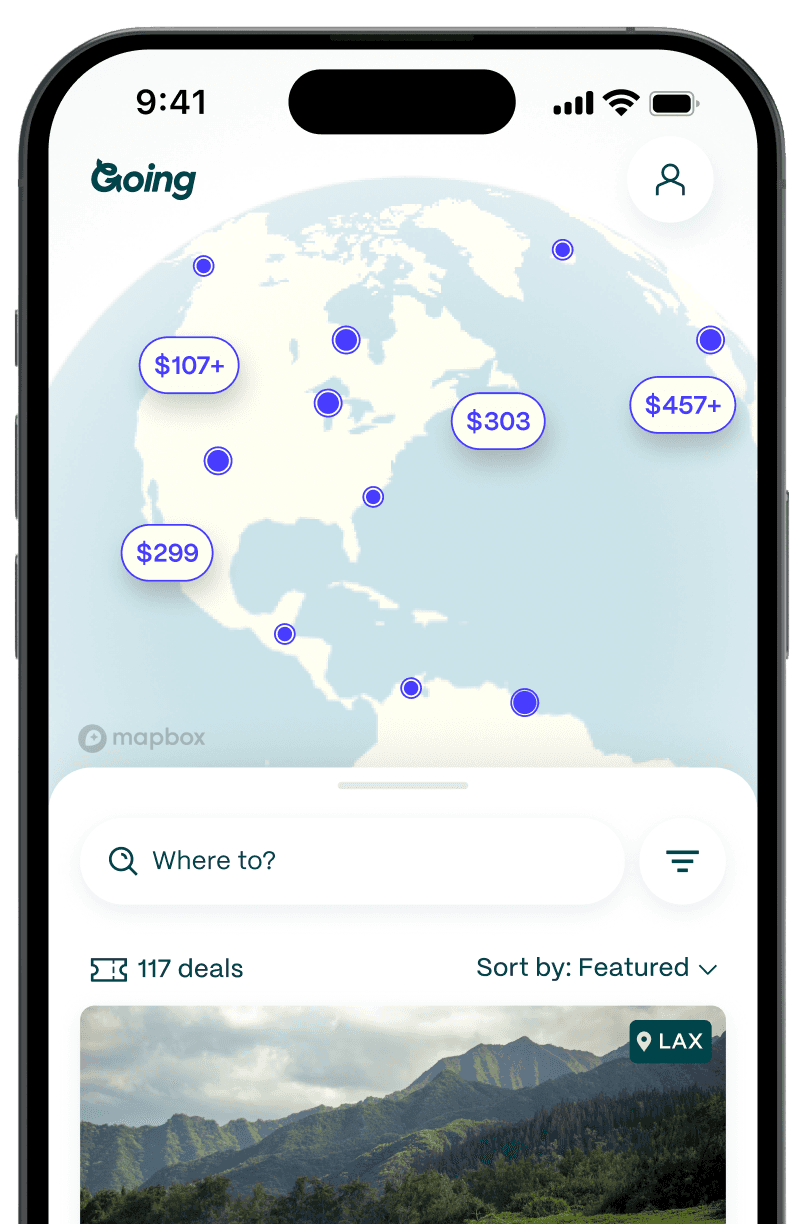
How to See the Giant Anteaters of Guyana
Table of Contents
Over breakfast, I can make out faint, indistinct voices over the radio from the kitchen at Waikin Ranch. The chatter on the walkie-talkies continues, and the peaceful morning quickly shifts towards excitement. It can only mean one thing here: an anteater.
I’m at Waikin Ranch, a working, self-sustaining cattle ranch set on 33,000 acres of savannah and wetland in western Guyana. All the food is grown right on the grounds, so this intimate all-inclusive experience gives visitors a sliver of genuine local life in rural Guyana.
There are just 4 clean and comfortable cabins, allowing up to 12 guests at the property at any given time. Each cabin has crisp white linens, mosquito netting over the beds, and natural wood accents. There are hammocks on the porches and a swimming hole on the property, perfect for a respite in between outdoor adventures that include nature walks and horseback rides to see the birds, jaguars, capybaras, armadillos, river otters, and giant anteaters that call the area home.
A ranch hand has seen an anteater this morning, and if I move quickly enough, I have the chance to see it too before it slinks back into the protection of the tall grasslands. An all-terrain Jeep bounces along toward the dining pavilion. Leaving my plate behind on the picnic table, I hop into the back of the truck, find a stable place to sit, and hold on as we barrel into the savanna.
The open-top vehicle allows for a 360-degree view, and after driving down the dirt road, we encounter one of the ranch hands on horseback. He waves the Jeep towards him. Giddy with anticipation, I ready my camera and scan the high grasses to look for a bushy tail or long snout to suddenly appear.
The Land of Giants

Guyana is known as the Land of Giants because it’s home to a large number of plants and animals that are among the largest of their category, including the jaguar, harpy eagle, giant water lily, and the giant anteater (Myrmecophaga tridactyla), which is the largest species of anteater and can grow up to seven feet from nose to tail and weigh 60-100 pounds.
Giant anteaters are found throughout South America—except for Guatemala, Uruguay, and El Salvador—but Guyana is among the best places to see them. In the vast unoccupied Rupununi savannah and wetlands of southwestern Guyana, these needle-nosed mammals are often seen in the early morning or late afternoon searching for ant hills or termites. The anteaters follow the food, and this part of the Guyanese countryside has an abundance of massive termite mounds, a buffet for anteaters.
A dinner of 30,000 termites
While the guide on horseback retreats closer to the truck, the lone anteater emerges, slinking from a divot in the ground. He undulates through the weeds, a long-tongued behemoth.
Anteaters, while seemingly docile creatures, can surprisingly be dangerous when provoked. They have strong, sharp claws that they use to break open termite mounds. These claws also provide defense from predators; our guide said an anteater could gouge a jaguar or puma with a deadly swipe. They are normally passive towards humans, but because of their poor eyesight, they are on alert and should be watched from a safe distance.
The anteater’s thick, silky coat serves as protection from insect bites as they dine. And these giants can really dine. They eat with their tongues and can slurp up tens of thousands of ants and termites a day.
Among the impressive expanse of land, our guide cuts the engine, and we can hear the swooshing of the dense blades of grass as the anteater sniffs for insects and sways its head side to side in search of its breakfast.
Seeing animals in the wild is always a gamble, though the odds of getting to see an anteater are in the visitors’ favor here. During my three days at Waikin I saw three anteaters—two within ranch lands and a third scurrying along the road towards Lethem. For me, getting to watch these giants in their natural habitat was an experience worth the wager.

Getting there
The nearest major airport to the Rupununi region is Cheddi Jagan International Airport (GEO) in Georgetown, Guyana, which is on the other side of the country, over 320 miles away. There are two options to reach the Rupununi region—taking a small plane to Lethem’s local airport, about 30 minutes from the Ranch, or a van ride. The road from Georgetown to Lethem is a long journey, taking at least 10-12 hours but because of the conditions, could be longer. If visitors are taking ground transportation over a flight, a tip is to break up the drive and explore the country along the way.
Average price of Going's cheap flights to Guyana: $441 roundtrip
How to do it
Best time to go: Late August to September, and February and March are the ideal times to visit Guyana. While you’ll have tropical climate temperatures year-round, these two windows are after the rainy seasons, so there will be lush, verdant landscapes and less chance of rain. May through August can bring heavy rainfall, causing flooding and making the dirt roads muddy and potentially impassible.
Cost: While there are a handful of ranches and lodges in the Rupununi region that accept guests, I chose Waikin Ranch based on budget, reviews, and commitment to sustainability. The average nightly rate at Waikin, with meals included, is approx $250 USD. Activities will range in price; nature walks are $20 USD per person, and horseback rides are $25 USD for an hour ride. The ranch will also arrange pickup from Lethem for $60 and can assist with booking domestic flights from Georgetown.
Tips and considerations: Guyana is for adventure travelers, outdoor enthusiasts, and those who don’t mind leaving luxurious amenities at home. 90% of the country is jungle or rainforest, and roads can be rough, travel by car is slow, and five-star accommodations are rare.
More amazing experiences around the world:
Last updated December 21, 2023
Articles you might like
View All
Where to Stay in Tokyo: The Best Neighborhoods and Hotels in 2026
Dec 19, 2025
12 min read

Where To Stay in Seattle: Best Neighborhoods and Hotels for 2026
Dec 19, 2025
10 min read

Where To Stay in San Francisco: Best Neighborhoods and Hotels for 2026
Dec 19, 2025
17 min read






